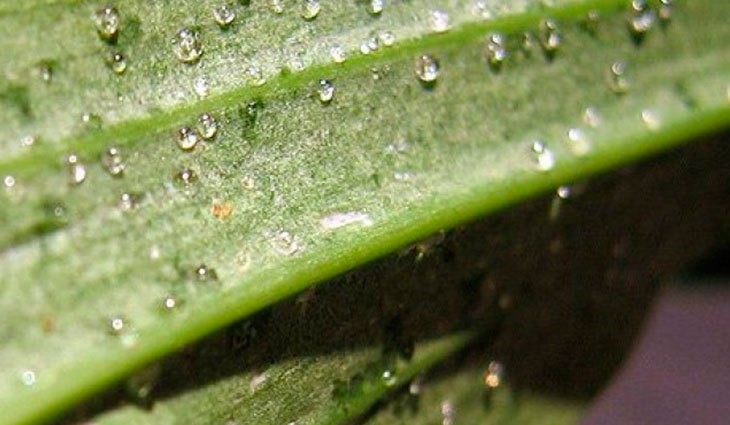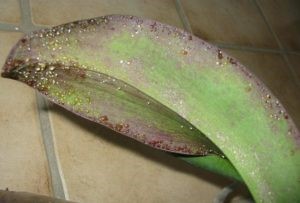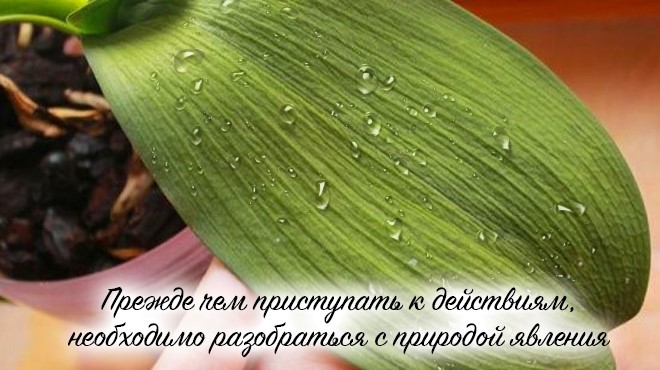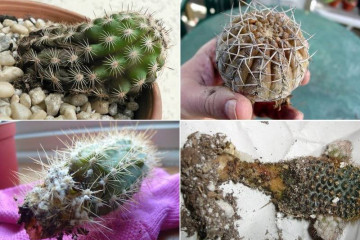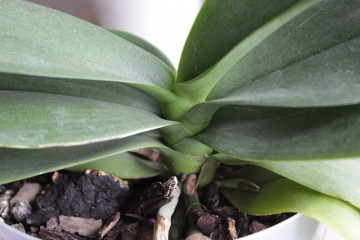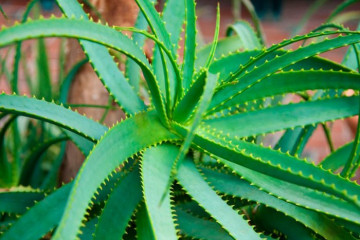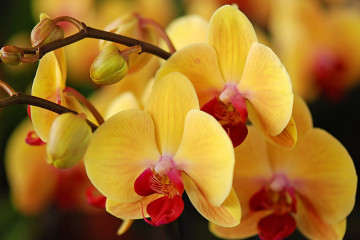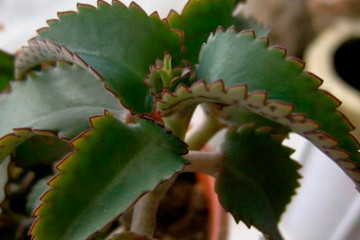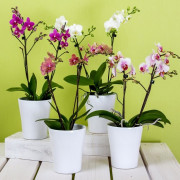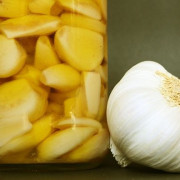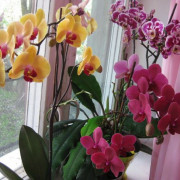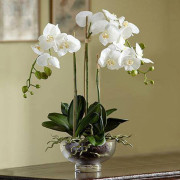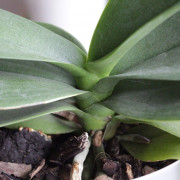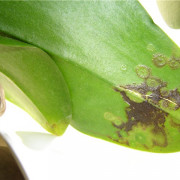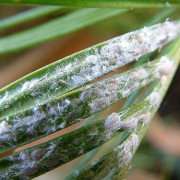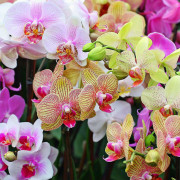Sticky drops on orchid leaves: causes and treatments
Content:
It happens that sticky drops form on the orchid. The reasons can be physiological or pathological. The first is the negative impact of the environment. Pathological causes are various plant diseases. It is necessary to eliminate the cause in a timely manner so that the pathogen does not pass to the roots or peduncles. Therefore, you need to know what to do when sticky droplets appear on the orchid.
The reasons
In order not to harm phalaenopsis, using various drugs, it is necessary to identify the root cause of the condition. It can be physiological, then there is no need for drugs.
Natural processes are highly probable. Normally, the plant is covered with flower nectar. This is due to natural metabolism - the processing of sugars.
To check if this is a natural process, you need to inspect the plant for the presence of various parasites, slightly reduce watering. Be sure to increase the room temperature.
The reason for the formation of drops may be the deterioration of conditions of detention:
- overflow. If the grower pours an excessive amount of water into the ground, and it also accumulates in the pallet, this negatively affects the plants;
- poor quality environmental conditions. Sticky spots appear when a flower stands on a windowsill, a large amount of sunlight falls on it. The condition worsens if the room temperature is low;
- poor-quality feeding or their excess. Not sticky drops appear, but leaf damage is still noticeable. Pigmentation is formed, which is not characteristic of the plant.
The plant can be attacked by insects:
- shield. Blotches of sticky drops are formed on orchid leaves, deformation and tubercles due to the feeding of the parasite with orchid juice;
- aphid - a midge that, after consuming the juice of a plant, leaves sticky dew, lives in the rhizome or near the point of growth of flowers;
- powdery mildew. First, drops appear on the surface, gradually forming a white bloom with black blotches.
The home-grown orchid is the most capricious plant. Therefore, it should be carefully looked after in order to achieve good flowering and the absence of various diseases. Even if slight drops or bloom appear on the leaves, it is necessary to immediately change the temperature and humidity in the room, remove bright sunlight.
Even a small number of pests can lead to the death of a flower. Therefore, treatment must be started immediately, using only high-quality drugs.
The composition of the sticky drops
If the condition is caused by over-watering, the liquid will concentrate in the soil as well as in various parts of the plant. There is so much of it that it cannot be kept inside. As a result, excess moisture is released through the leaves. A large amount of dew is formed, which a person can take for education from pests. The stickiness from the liquid is minimal as the sugar-to-water ratio is lower.
The plant can secrete liquid on its own. It is necessary to attract insects for pollination or to kill parasites.Then the drops contain sugar particles that attract insects.
Fluid can also form due to the spread of parasites. They attach themselves to the leaves of the orchid, starting to suck the juice out of it. Then they fly over to another part of the plant. In the place where the puncture was made, the juice residue is released. It also contains a lot of sugar, making it sticky to the touch.
Flower treatment options
If the orchid contains only a transparent sticky plaque, but there are no other symptoms of the disease, the conditions of detention must first be changed. They should be as follows:
- elimination of bright sunlight that may fall on the orchid located on the windowsill;
- reducing the amount of water for irrigation (this action cannot be completely eliminated);
- elimination of various dressings, which could be too much to prevent rotting, death of flowers and the whole plant;
- the ambient temperature should be average, no more than 23 ° С;
- the ambient temperature should always be stable, drops are not recommended, as well as drafts;
- drying the top layer of the soil in the pot;
- creating a drainage layer for water that enters the pot during watering.
Then the plant is monitored for a week. In the absence of various diseases, the state of the plant is normalized, the sticky formations from the leaves will completely disappear. If no changes are observed, additional symptoms of the disease appear, it is necessary to start treatment. All parts of the flower should be carefully examined, since parasites and midges may be contained in various areas.
The liquid on the orchid can appear to attract the parasites that have settled on it. When they stick to the liquid, they cannot move, so they gradually die. The plant will not be able to cope on its own for a long time, therefore it is necessary to help it with the help of various chemicals.
If parasites are present, follow:
- eliminate the possibility of contamination of other plants in neighboring pots by moving the orchid to another room;
- take a cotton swab, with which they thoroughly rub all parts of the orchid from bottom to top to remove midges and other parasites;
- if any areas of the leaves, trunk or stems are badly damaged, they should be removed;
- spraying with a solution of insecticides (nurell-D, phosphamide, actellik), which destroy pathogens, but do not harm the orchid itself;
- to cultivate the soil by lowering the pot into a container with a liquid to which an insecticide tablet, for example, alirin-B, has been added;
- so that drops do not appear again, you should thoroughly rinse the pot, leaves, stems, flowers once every 10 days.
Phalaenopsis can be returned to its original place only after complete processing and elimination of the risk of re-disease, so it will not be able to harm other flowers.
If the flower is not severely affected, you can try using traditional methods of treatment. These include the following methods:
- washing the leaves with diluted soapy water daily;
- if ordinary soapy water does not help, you can add a small amount of alcohol or vodka to it for disinfection;
- shower with water at room temperature with further treatment with aromatic oils;
- using a mixture that contains garlic and oil;
- making a tincture containing horsetail. The liquid is filtered and the plant is treated daily;
- processing of various parts of phalaenopsis with water, to which a small amount of soda and iodine is added.
Traditional methods of treatment have a gentle effect. They do not harm the phalaenopsis itself, so it will not only survive, but also begin to bloom faster.
Disease prevention
It is much easier to prevent the negative influence of the environment and the action of parasites on the flower than to further treat it. Therefore, it is necessary to adhere to the rules of prevention:
- in summer, the ambient temperature should be no more than 23 ° С, and in winter up to 18 ° С;
- in the summer, the flower must be watered in a larger volume (compared to winter), but in reasonable quantities so as not to provoke root rot;
- watering should be carried out once a week in winter and 2 times a week in summer;
- water for irrigation should be settled, it is not recommended to use various additives for other purposes, for example, salt, impurities;
- the humidity in the room should not be low or excessively high, 60% is considered optimal;
- if you need to transplant phalaenopsis or propagate it, you should first check all its parts for the presence of parasites, darkening, changes in pigmentation, the presence of sticky spots;
- ventilate the room daily so that the flower receives a sufficient amount of oxygen;
- it is not allowed to find the pot on a windowsill or in any other place where direct sunlight falls on it;
- fertilizers can be applied to the soil no more than 2 times a month, be sure to do this during the flowering period;
- plant food should contain minerals, especially iron and potassium, thanks to which phalaenopsis can constantly bloom and be healthy;
- daily spraying of all parts of the flower with water to eliminate the possibility of dust accumulation and the appearance of pests.
If all the conditions are met correctly, this will prevent the lethargy of flowers, damage, dryness, rotting of rhizomes and leaves.
Insecticides are not used as a preventive measure. Their misuse can lead to poisoning of the orchid and its subsequent death. Therefore, the product can only be used in the presence of parasitic insects.
Plant care after treatment
After the sticky drops on orchid leaves have been eliminated, therapeutic measures must be taken. This is due to the fact that the development of a parasitic infection is at risk of recurrence. That is, insects can reappear, move to neighboring flowers.
Therefore, you should adhere to the following rules for caring for an orchid after treatment:
- daily washing of the stem, leaves and flowers with a cotton pad dipped in water or soapy water;
- transplanting phalaenopis into another pot to eliminate the risk of relapse;
- the pot in which the orchid stood during the disease must be thoroughly washed and disinfected;
- watering is carried out no more than 1 time a week with a moderate amount of water;
- fertilizing with fertilizers is carried out only a few months after the plant has recovered;
- do not bring the humidity in the room to the maximum limits, since such an environment is optimal for the development of various pests.
Not everyone knows why orchids have sticky leaves.
If done correctly, Phalaenopsis will recover in the coming days. In the future, it is recommended to follow the rules of prevention in order to prevent the risk of relapse.
